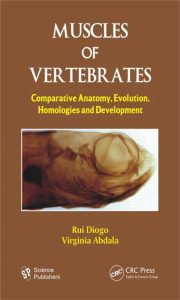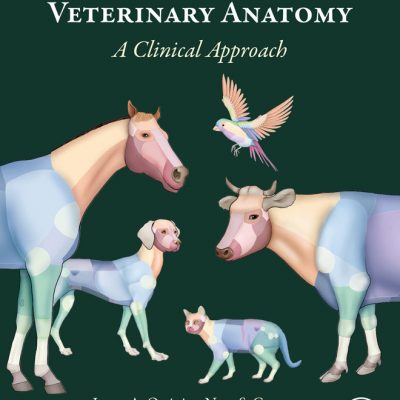
Muscles of Vertebrates: Comparative Anatomy, Evolution, Homologies and Development
by Rui Diogo, Virginia Abdala
July 2010

The Vertebrata is one of the most speciose groups of animals, comprising more than 58,000 living species. This book provides a detailed account on the comparative anatomy, development, homologies and evolution of the head, neck, pectoral and forelimb muscles of vertebrates. It includes hundreds of illustrations, as well as numerous tables showing the homologies between the muscles of all the major extant vertebrate taxa, including lampreys, elasmobranchs, hagfish, coelacanths, dipnoans, actinistians, teleosts, halecomorphs, ginglymodians, chondrosteans, caecilians, anurans, urodeles, turtles, lepidosaurs, crocodylians, birds, and mammals such as monotremes, rodents, tree-shrews, flying lemurs and primates, including modern humans. It also provides a list of more than a thousand synonyms that have been used by other authors to designate these muscles in the literature. Importantly, it also reviews data obtained in the fields of evolutionary developmental biology, molecular biology and embryology, and explains how this data helps to understand the evolution and homologies of vertebrate muscles.
The book will useful to students, teachers, and researchers working in fields such as functional morphology, ecomorphology, evolutionary developmental biology, zoology, molecular biology, evolution, and phylogeny. As the book includes crucial information about the anatomy, development, homologies, evolution and muscular abnormalities of our own species, Homo sapiens, it will also be helpful to physicians and medical students.
- Includes hundreds of illustrations as well as numerous tables showing the homologies between the muscles of all the major extant vertebrate taxa
- Provides a list of more than a thousand synonyms that have been used by other authors to designate these muscles in the literature
- Reviews data obtained in the fields of evolutionary developmental biology, molecular biology, and embryology, and explains how this data can helps to understand the evolution and homologies of vertebrate muscles






